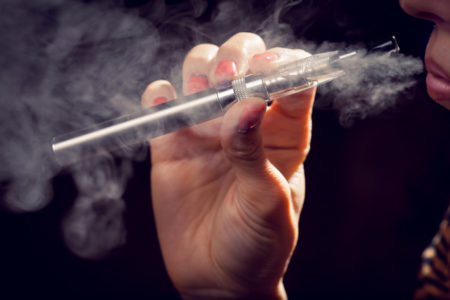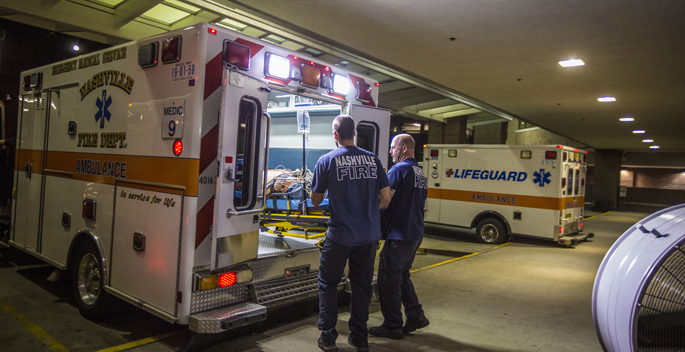by Jessica Pasley
Physicians at Monroe Carell Jr. Children’s Hospital at Vanderbilt are seeing what seems to be an increase in the number of teens and young adults being treated for severe respiratory injury after e-cigarette use.
“In the last six months, we have had four cases,” said Jacob Kaslow, MD, a second-year pediatric pulmonary fellow at Children’s Hospital. “Overall, we are seeing patients coming in with symptoms that seem out of the ordinary and appear more severe than a respiratory infection. Many have come directly to our Emergency Department while others were transferred from surrounding areas and states.

“As a pulmonary department, we are beginning to develop more awareness of the impact that e-cigarettes are having. These devices are just a couple of years old and we are on the forefront of recognizing how severe and diverse the complications can be.”
Kaslow reports seeing patients with shortness of breath, severe pneumonia, lung collapse, coughing up blood and complete respiratory failure, often placing them in the Pediatric Intensive Care Unit. Some patients have recovered while others will have irreversible lung disease.
“We are all working to figure out what we are truly dealing with,” said Kaslow. “The use of e-cigarettes can make a common infection more severe because the body’s immune system is affected. It is so important that when we ask about the use of this device, that our patients are truthful.”
In a recent case, knowing the patient used e-cigarettes allowed the medical team to change the management of care that resulted in a significant improvement in the patient outcome.
The increase in e-cigarette or vaping cases has changed the medical history intake protocol. It is a common habit to ask teenagers and young adults about smoking and exposure to smoke among other activities. Now the pulmonology team has included questions about e-cigarette use.
Kaslow fears that the number of e-cigarette lung cases involving teens and young adults will increase, and it’s spreading to pre-teens as well.
“Upwards of 3 million high school students, 1 in 5, use e-cigarettes,” Kaslow said of recent reports. “One in 20 middle school students are vaping. I believe that is underestimated. And we will continue to see patients coming in with respiratory injury.
“We need more information, data, case reports and research to gain more insight into the dangers and complications,” he said. “Unfortunately, more data also means more children are getting sick.”
Kaslow said the flavoring of the liquid, the main attraction for younger vapers, is often a combination of chemicals being inhaled causing health issues.
“Users are inhaling chemicals that are not meant to be inhaled. With cigarettes it took 40-50 years to see the negative impact. We are seeing lung toxicity and the development of significant respiratory complications within months after initial use of e-cigarettes.”















